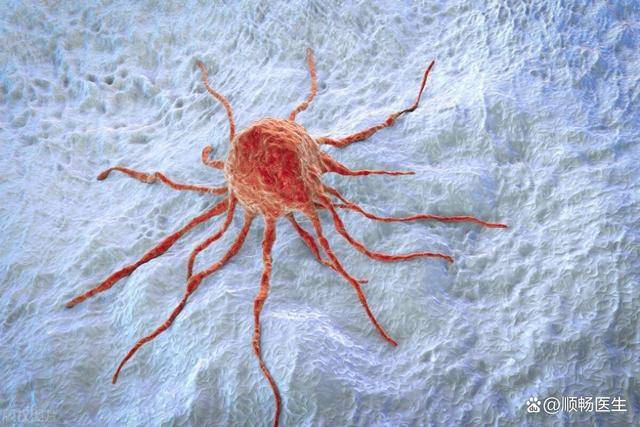Do you know one of the hidden killers in men’s health? This is not a common topic. In fact, due to its sensitive nature, many important discussions have been set aside. Penile cancer, despite its low incidence rate, is a cause of much suffering for many families. A common misconception is that penile cancer is just a rare case and doesn’t require excessive attention. However, for affected families, this is a battle of life and death. This article will delve into the basic knowledge of penile cancer, how to identify and treat it early, helping you prevent it.
Basic knowledge of Penile Cancer
Rare yet deadly: An Overview of Penile Cancer
Penile cancer is a malignant tumor that occurs in the tissues of the male penis. Although it has a low incidence rate among all male cancers, its impact is significant once it occurs. Statistics show that penile cancer mostly affects males over the age of 50, but it is essential to note that males of any age can be victims of this disease.
Main types and stages of development
Penile cancer typically appears in the form of squamous cell carcinoma, accounting for about 95% of all cases. In addition, rare cases may include basal cell carcinoma and melanoma. The development of penile cancer can be divided into several stages:
Stage 1: Cancer cells are confined to the epidermis.
Stage 2: Cancer cells start invading deeper layers.
Stage 3: Cancer cells spread to nearby tissues and lymph nodes.
Stage 4: Cancer spreads to other parts of the body.
Common risk factors
Understanding and recognizing the risk factors of penile cancer is crucial for prevention and early diagnosis. These risk factors include:
HPV infection: Certain types of human papillomavirus (HPV) are significantly associated with penile cancer.
Tobacco use: Smokers have a significantly increased risk of penile cancer.
Hygiene habits: Poor personal hygiene may increase the risk of the disease, especially in uncircumcised males.
Chronic inflammation: Long-term inflammation of the penile glans is also a risk factor.
Early identification and prevention of penile cancer: Warning signs and defense strategies
Early warning signs
Penile cancer may not be easily detected early because its initial symptoms are often overlooked. Key early symptoms include any abnormal lumps on the penis, ulcers that do not heal, discolored spots or thickened skin. These symptoms can occur at any part of the penis, including the glans and inner foreskin. Pain and bleeding may also be warning signs, especially after sexual activity. If these changes are observed, it is essential to consult a doctor for further examination.
Preventive strategies
Preventing penile cancer involves various strategies. Firstly, vaccination against human papillomavirus (HPV) can significantly reduce the risk of penile cancer caused by HPV infection. Secondly, maintaining good personal hygiene habits is also key to prevention, including regular washing of the genital area, especially for males with longer foreskins. Avoiding the use of tobacco products is also considered to reduce the risk of penile cancer. Finally, regular check-ups, especially for individuals with symptoms or the above risk factors, are an effective way to detect early changes.
Diagnosis and treatment of penile cancer: Precise targeting and hopes for cure
First step in diagnosis
The diagnosis of penile cancer usually begins with a visual examination of the abnormal area, followed by a biopsy, which is the gold standard for diagnosing penile cancer. In a biopsy, the doctor takes a small tissue sample for pathological examination. Based on the biopsy results, the doctor may further recommend imaging tests such as ultrasound or MRI to determine if the cancer has spread to the lymph nodes or other parts of the body.
Treatment plan selection
The methods for treating penile cancer depend on the stage of cancer, its location, and the overall health of the patient. Surgery is the most common treatment method, which may involve local excision of small tumors or partial or complete removal of the penis in advanced cases. For patients who cannot undergo surgery or choose not to, radiation therapy and chemotherapy are other effective treatment options. Radiation therapy can be used as adjunctive treatment to surgery to help eliminate residual cancer cells, while chemotherapy is used to treat cancer that has already spread.
Through these methods, significant progress has been made in the treatment of penile cancer, with successful cases including those who have fully recovered through early diagnosis and timely treatment. Therefore, there is hope for penile cancer patients to achieve healing through the help of modern medicine.
While penile cancer may be a rare type of cancer, early detection and prevention measures are crucial. By being vigilant to early signs, adopting preventive strategies, and timely diagnosis and treatment, we can better address this disease.
Of course, education and awareness are also essential to increase people’s understanding of penile cancer and encourage them to take preventive measures and undergo regular check-ups. Through the collective efforts of society, we can help more people understand penile cancer, identify and treat it at an early stage, thereby improving the recovery and survival rates of patients.
Most importantly, whether for penile cancer or other cancers, prioritizing health, active prevention, and timely treatment are important measures to safeguard the health of oneself and family.
Proofreading/Formatting: Xiaohuan Health


